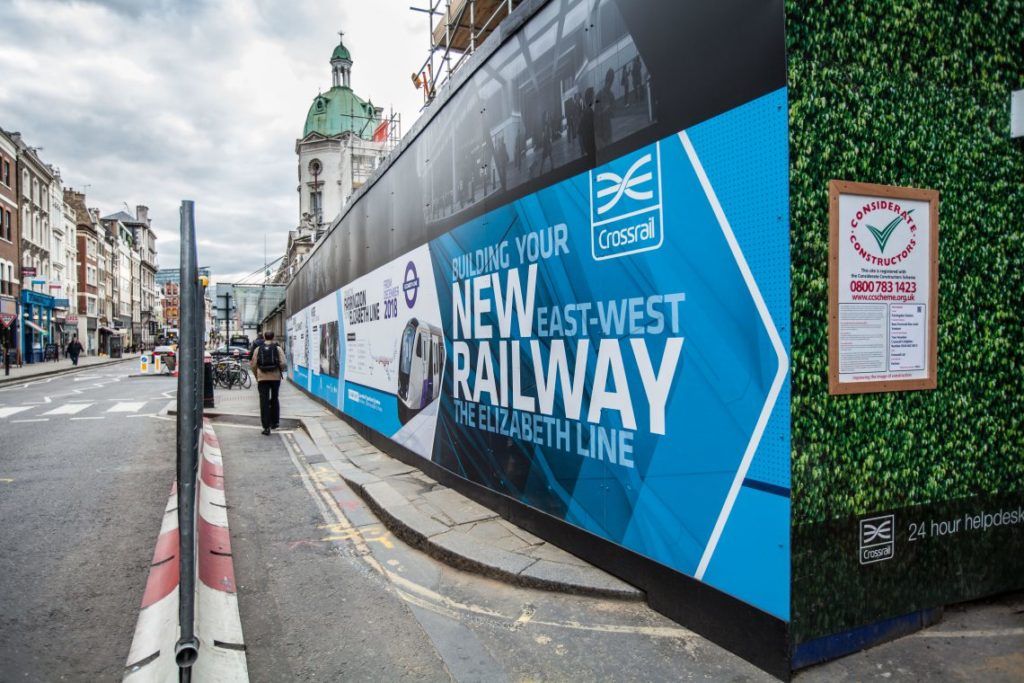Do You Know the Construction Site Hoarding Regulations?
Do you know the regulations concerning the hoardings around areas of construction work?
The hoarding on building sites - temporary wall-like structures that are built around the perimeter of the site - are covered by site hoarding regulations.
They are designed to shield the site from the view of the public and prevents unauthorised access, theft, destruction and/or vandalism. However, the main point of those fence panels is to protect the public.
The Health and Safety at Work Act (1974) notes that employers have to protect members of the public passing by the construction site. As you conduct a H&S assessment of the site, part of that assessment should determine the risks to the public.
The Construction Design and Management Regulations (CDM Regulations) have 5 principle parts to its legal obligations, requiring signs on the hoarding to establish who has access to the site.
Principal contractors must take steps to prevent unauthorised access. Some sites use keycards and/or have security access to help with site authorisation.
Special Considerations for Site Hoarding
It is important that managers make special considerations. This could be because of rights of way, work areas that are next to the site, houses nearby and children and/or vulnerable people who live in the surrounding areas.
There are extra steps you need to take because of the children and/or vulnerable people who are close to the work site such as:
- Placing barriers around excavations or pits and making sure to immobilise and isolate vehicles.
- Locking vehicles in a compound if it is possible to do so.
- Storing building materials so they cannot fall or roll over anything such as manhole rings, cement bags, and pipes.
- Always removing access ladders from excavations and scaffolding.
- Locking away any hazardous substances.
Wall Height and Construction Materials
Most building sites need at least a 2 metre (6.5 feet) high fence or hoard with 2.4 metres (7.8 feet) being the recommendation. High-security fences or hoarding is 3 metres (9.8 feet). For sites in city centres, or places where children may attempt to gain access, a higher fence may be appropriate.
It is possible for your site operators to build internal perimeter fences out of metal mesh with lockable sections to separate tools inside of the work site. The perimeter hoarding can be made of steel or timber. Timber usually comes pre-set at around 2.4 metres. Often, the it is plywood or low density chipboard.

If you use barbed wire, dragon tail, or electric fencing it would need be higher to avoid accidental injury of passersby.
Modern Designs in Hoarding
Construction companies often paint the hoarding in their contractor’s colours and decorate it with logos and branding to show who is working on the site.
In modern times, some companies have sold space on their site perimeter fencing to advertisers, or used it to display architectural images of the project.
Design and Digital Print company PressOn look to be leading the way in eye-catching aesthetics - here are just a few examples of their site hoarding designs.



Making Sure Hoarding Cannot be Scaled or Causes an Obstruction
Fencing should be difficult to climb with no hand or footholds, and no gaps underneath. Flat-sided hoardings are more difficult to climb than mesh fences and prevent people from viewing the site. You should highlight fence posts in pedestrian areas to avoid tripping hazards with warning or barricade tape, Full barricades or hazard cones.
It is possible for you and your workers to add angled extensions, known as fans, to the top of the hoarding. This will make climbing difficult. Also, this will reduce litter and/or other missiles being thrown over which could potentially injure your site workers.
Securing the Site Against Intrusion and the Weather
Hoarding needs to withstand strong winds and all types of weather, so it is important to consider the wind load when choosing materials for your fencing.
If wind loading is an issue, you need to provide adequate bracing, following manufacturer or supplier instructions. Do not place loads on the hoarding or fencing without re-assessing and determining its stability first.
This includes adding mounted lights or CCTV cameras. Debris netting and signs can also create an additional load and imbalance, so make sure everything has been accounted for and it is strong enough to hold everything.
Clips and bolts should have tamper-proof fixings, only available from the inside.
Provide secure gates at access points; gates should be the same size as surrounding hoarding and be part of the fence so you can control access through the gates.
The gate should be secure if open, and should not blow shut if there are strong winds. Gates should be closed when necessary - for example, in schools - or for internal security, but it shouldn’t hinder escape routes in an emergency.

Most hoarding rental companies supply and install gates for both pedestrian and vehicle access. Also, they might install vision panels, lighting, and access controls.
You should inspect the gates regularly, and repair when needed or modify access as the site requirements change.
What Hazards Could Affect the Public?
Even if there is hoarding securing the site, sometimes falling objects can fall outside of the site boundary so it is important to make sure objects can not fall outside of the boundary.
If you have scaffolding, use toe boards, brick guards, rubble shoots and netting to prevent debris accidentally falling into public spaces. Fans and covered walkways can cut down on these hazard risks too.
When there are delivery and site vehicles moving in and out of the site, ensure vehicles coming and going can not affect pedestrians or other traffic - use a banksman if in any doubt.

During deliveries, large vehicles can obstruct the pavement forcing pedestrians to walk on the road. Do not block walkways for longer than is absolutely necessary as this causes undue hazards and risk to the public.
Secure building materials, safety equipment, and plant machinery in compounds away from perimeter fencing, ensuring it is not within reach off-site and preferably out of view completely.
Erect barriers and place covers on excavations, manholes, stairwells, and open floor edges to prevent trips and falls.
Conclusion
Make sure everyone on site is safe by wearing the correct PPE and that all personnel and workers consider the public impact of building sites.
Also, workers need to take extra care to make sure the hoarding and fencing protects the public from internal hazards and dangers.
Security personnel should take extra precautions to not grant unauthorised access.
Hoarding needs to meet the correct regulations by protecting the public to a reasonable measure and keep unauthorised people off the construction site and out of harm's way.






